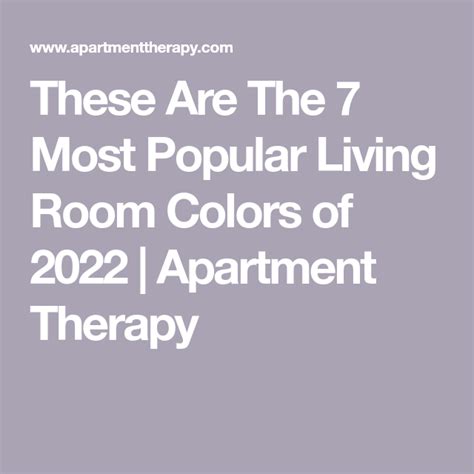
The color gray, once a staple of modern interior design, is now being reconsidered by some designers who believe it can drain the energy from a living space and make it feel cold and uninviting.
Gray’s neutrality, previously lauded for its versatility, is now viewed by some as a potential drawback, leading to spaces that lack personality and warmth. According to two designers interviewed by Yahoo Life, a shift towards warmer and more vibrant hues is gaining momentum as homeowners seek to create cozier and more welcoming environments.
“Gray became incredibly popular because it was seen as a safe and neutral choice, but it can easily fall flat and create a depressing atmosphere if not balanced correctly,” says designer Jennifer Verruto, founder and CEO of Blythe Interiors. Designer Lance Thomas of Room Service agrees, emphasizing that “cool grays, in particular, can make a room feel sterile and unwelcoming.”
The designers suggest that homeowners consider warmer neutrals, earthy tones, or even bolder colors to inject life and personality into their living rooms. Strategies for mitigating gray’s potential drawbacks include incorporating warm-toned accessories, textured fabrics, and ample lighting.
The Rise and Fall of Gray: A Design Retrospective
For years, gray reigned supreme as the go-to neutral for interior designers and homeowners alike. Its popularity stemmed from its perceived versatility and its ability to create a clean, modern aesthetic. Gray provided a blank canvas that could be easily paired with a variety of accent colors and design styles. From Scandinavian minimalism to industrial chic, gray served as a foundational element in countless homes.
However, as design trends evolve, so do our perceptions of color. What was once considered sophisticated and contemporary can eventually become dated and even undesirable. The current shift away from gray reflects a broader desire for warmth, personality, and individuality in interior spaces. As people spend more time at home, the need for environments that promote comfort and well-being has become increasingly important.
Why Gray Is Falling Out of Favor
Several factors contribute to the decline of gray’s popularity. One key reason is its potential to create a sense of coldness and detachment. Cool grays, in particular, can lack warmth and make a room feel sterile and uninviting. This effect is amplified in spaces with limited natural light or those that lack warm-toned accents.
Another issue with gray is its ubiquity. Overexposure has led to a sense of monotony and a desire for something fresh and different. As Jennifer Verruto notes, “Everyone was doing gray, and it became predictable. People are now craving more individuality and a more personalized look.”
Furthermore, gray can be challenging to work with effectively. Achieving the right balance is crucial to prevent a room from feeling dull or lifeless. Without careful consideration of lighting, texture, and complementary colors, gray can easily fall flat and create a depressing atmosphere.
Lance Thomas highlights the importance of considering the overall context of the space. “Gray can work well in certain settings, but it’s essential to understand its limitations. In many cases, it’s simply not the best choice for creating a warm and inviting living room.”
Alternatives to Gray: Embracing Warmth and Personality
So, what are the alternatives to gray? Designers are increasingly recommending warmer neutrals, earthy tones, and even bolder colors to create more inviting and personalized living spaces.
Warm Neutrals:
Warm neutrals such as beige, cream, and ivory offer a softer and more welcoming alternative to gray. These colors provide a similar level of versatility but with a greater sense of warmth and comfort. They also tend to work well with a wider range of lighting conditions and can be easily paired with both warm and cool accent colors.
“Warm neutrals are a great way to create a timeless and inviting space,” says Verruto. “They provide a sense of calm and can be easily layered with different textures and patterns.”
Earthy Tones:
Earthy tones such as terracotta, olive green, and mustard yellow are another popular choice for creating a warm and inviting atmosphere. These colors evoke a sense of nature and can bring a sense of grounding and tranquility to a living room. They also tend to work well with natural materials such as wood, stone, and leather.
Thomas suggests incorporating earthy tones through paint, furniture, and accessories. “Earthy tones can add a lot of depth and character to a space. They create a sense of warmth and connection to the natural world.”
Bold Colors:
For those who are feeling adventurous, bolder colors can be a great way to inject personality and energy into a living room. Jewel tones such as emerald green, sapphire blue, and ruby red can create a sense of drama and sophistication. Muted pastels such as blush pink, lavender, and mint green can create a softer and more romantic atmosphere.
“Don’t be afraid to experiment with color,” advises Verruto. “A pop of color can make a big difference in a room. Just be sure to choose colors that you love and that reflect your personal style.”
Mitigating Gray’s Drawbacks: Tips and Tricks
Even if you’re not ready to completely abandon gray, there are several ways to mitigate its potential drawbacks and create a more inviting living space.
Incorporate Warm-Toned Accessories:
Adding warm-toned accessories such as throw pillows, blankets, and rugs can help to balance out the coolness of gray. Colors such as gold, copper, and rust can add a touch of warmth and sophistication to a room.
Use Textured Fabrics:
Textured fabrics such as velvet, wool, and linen can add depth and visual interest to a gray space. These fabrics can also help to absorb sound and create a more comfortable and inviting atmosphere.
Ample Lighting:
Adequate lighting is essential for any living room, but it’s especially important in a gray space. Use a combination of natural light, overhead lighting, and lamps to create a well-lit and welcoming environment. Warm-toned light bulbs can also help to counteract the coolness of gray.
Add Natural Elements:
Incorporating natural elements such as plants, flowers, and wood can help to bring life and warmth to a gray space. Plants can add a pop of color and freshness, while wood can add a sense of grounding and connection to nature.
Consider the Undertones:
Not all grays are created equal. Some grays have cool undertones (such as blue or green), while others have warm undertones (such as beige or yellow). When choosing a gray paint color, be sure to consider the undertones and how they will interact with the other elements in your living room.
The Psychological Impact of Color
The shift away from gray also reflects a growing awareness of the psychological impact of color. Color has a powerful influence on our emotions and behavior, and the colors we choose for our homes can have a significant impact on our overall well-being.
Cool colors such as blue and gray are often associated with calmness and tranquility, but they can also evoke feelings of sadness or detachment. Warm colors such as red, orange, and yellow are associated with energy, excitement, and happiness. Neutral colors such as beige and cream can create a sense of calm and balance.
By understanding the psychological impact of color, homeowners can make more informed choices about the colors they use in their living spaces. Choosing colors that evoke positive emotions and promote well-being can help to create a more comfortable and inviting home environment.
The Future of Interior Design: A Move Towards Personalization
The trend away from gray is part of a larger movement towards personalization in interior design. Homeowners are increasingly seeking to create spaces that reflect their individual personalities and lifestyles. This means moving away from cookie-cutter designs and embracing unique and eclectic styles.
“People are tired of seeing the same thing over and over again,” says Thomas. “They want their homes to be a reflection of who they are, not just a carbon copy of what they see in magazines.”
This trend towards personalization is also being driven by the rise of social media and online design platforms. These platforms provide homeowners with access to a wealth of inspiration and resources, empowering them to create their own unique designs.
As interior design continues to evolve, we can expect to see even more emphasis on personalization, individuality, and the creation of spaces that promote comfort, well-being, and a sense of connection. Gray may still have its place in certain settings, but its reign as the dominant neutral is likely over. The future of interior design is all about embracing warmth, personality, and the unique stories that our homes can tell.
Expert Opinions on the Gray Trend
Beyond Verruto and Thomas, many other designers have weighed in on the gray trend. Some agree that it’s time for a change, while others believe that gray can still be used effectively in certain contexts.
“Gray is not inherently bad, but it has been overused,” says Emily Henderson, a well-known interior designer and blogger. “It’s important to use it intentionally and to balance it with other colors and textures.”
Sherwin-Williams, a leading paint manufacturer, has also acknowledged the shift away from gray. In recent years, the company has named warmer and more vibrant colors as its Color of the Year, signaling a broader trend towards warmer and more inviting interiors.
“We’re seeing a move towards colors that evoke comfort, optimism, and connection,” says Sue Wadden, director of color marketing at Sherwin-Williams. “People are looking for colors that make them feel good and that create a sense of well-being in their homes.”
Case Studies: Gray Done Right (and Wrong)
To illustrate the potential pitfalls and possibilities of using gray in interior design, let’s examine a few case studies.
Case Study 1: The Gray Monotony
Imagine a living room with gray walls, a gray sofa, a gray rug, and gray accessories. The only pops of color are a few small throw pillows in muted tones. The room lacks warmth, personality, and visual interest. It feels cold, sterile, and uninviting. This is an example of gray done wrong. The overabundance of gray creates a sense of monotony and deprives the room of any sense of life or energy.
Case Study 2: The Balanced Gray
Now imagine a living room with light gray walls, a beige sofa, a colorful rug, and a variety of accessories in warm tones. The room is well-lit and features plenty of natural elements such as plants and wood. The gray walls provide a neutral backdrop that allows the other elements in the room to shine. The room feels balanced, inviting, and stylish. This is an example of gray done right. The gray walls are used intentionally and are balanced with other colors, textures, and materials to create a cohesive and visually appealing space.
Case Study 3: The Gray Accent
Finally, imagine a living room with white walls, a blue sofa, and gray accents such as curtains and throw pillows. The gray accents add a touch of sophistication and modernity to the room without overpowering the other elements. The room feels fresh, airy, and stylish. This is another example of gray done right. The gray is used sparingly and strategically to enhance the overall design of the room.
These case studies illustrate the importance of using gray intentionally and in moderation. When used correctly, gray can be a valuable tool for creating stylish and sophisticated interiors. However, when overused or poorly balanced, it can lead to spaces that feel cold, sterile, and uninviting.
Conclusion: Embracing Change and Finding Your Style
The decline of gray’s popularity is a reminder that design trends are constantly evolving. What was once considered fashionable can quickly become dated, and it’s important to stay open to new ideas and possibilities. The key to creating a successful interior design is to embrace change, experiment with different colors and styles, and ultimately find what works best for you.
Don’t be afraid to break the rules and create a space that reflects your individual personality and lifestyle. Whether you choose to embrace warmer neutrals, earthy tones, or bold colors, the most important thing is to create a home that you love and that makes you feel comfortable, happy, and inspired. Gray may be on its way out, but the possibilities for creating beautiful and inviting living spaces are endless.
Frequently Asked Questions (FAQ)
1. Why is gray considered a “mistake” for living rooms now?
Some designers believe gray, particularly cool grays, can create a cold, sterile, and uninviting atmosphere if not balanced correctly. Overuse of gray has also led to a sense of monotony, and people are now craving more individual and warmer designs. As Jennifer Verruto explains, gray became “predictable,” and homeowners are seeking “more individuality.”
2. What are some better alternatives to gray for living room colors?
Designers suggest warm neutrals like beige, cream, and ivory, earthy tones such as terracotta, olive green, and mustard yellow, or even bolder colors like emerald green, sapphire blue, and ruby red. These alternatives can inject warmth, personality, and energy into a living space.
3. Can I still use gray in my living room, or is it completely outdated?
Gray isn’t completely outdated, but it should be used intentionally and in moderation. You can mitigate its potential drawbacks by incorporating warm-toned accessories, textured fabrics, ample lighting, and natural elements. Consider the undertones of the gray you choose, opting for warmer grays if you want to maintain some neutrality.
4. What psychological effect does gray have on a living space?
Gray can evoke feelings of calmness and tranquility, but it can also lead to a sense of sadness or detachment if overused or if it’s a cool shade of gray. Warm colors are generally associated with energy and happiness, while neutral colors can create a sense of balance.
5. How can I update my gray living room without completely redecorating?
Incorporate warm-toned accessories such as throw pillows, blankets, and rugs in colors like gold, copper, or rust. Add textured fabrics like velvet, wool, or linen. Ensure ample lighting, including natural light, overhead lighting, and lamps with warm-toned bulbs. Introduce natural elements such as plants, flowers, and wood to bring life and warmth to the space. By layering these elements, you can create a more inviting and personalized space.









